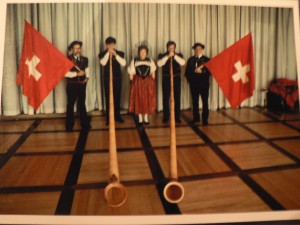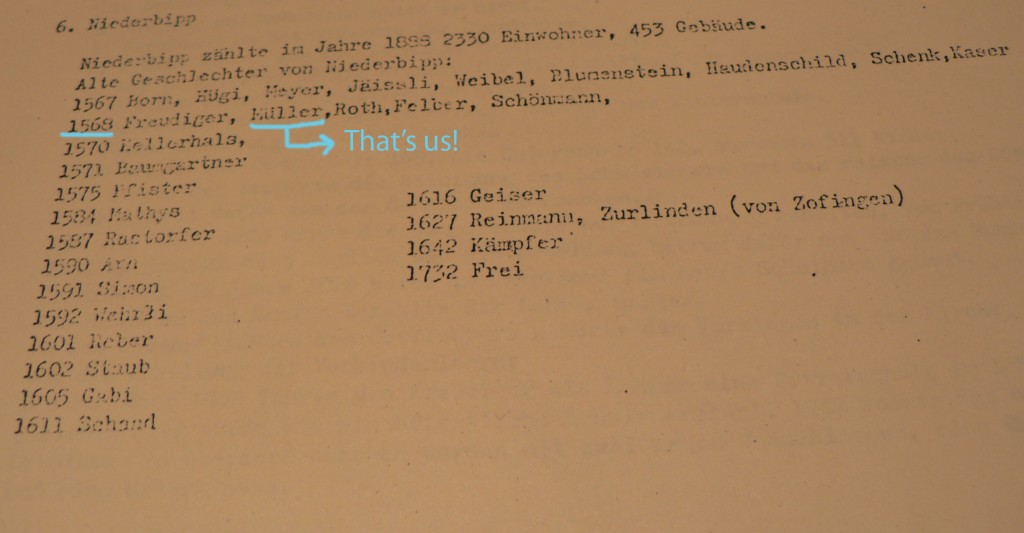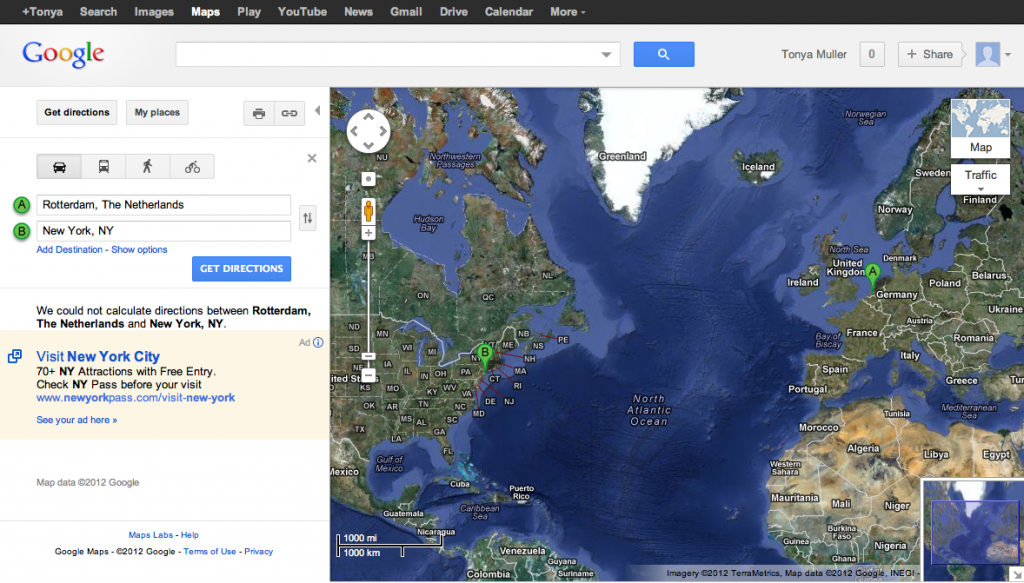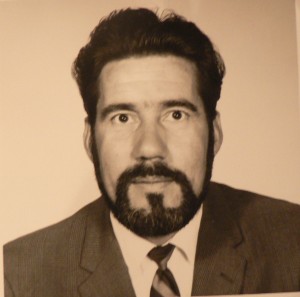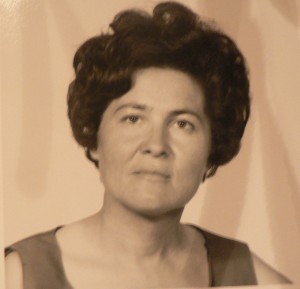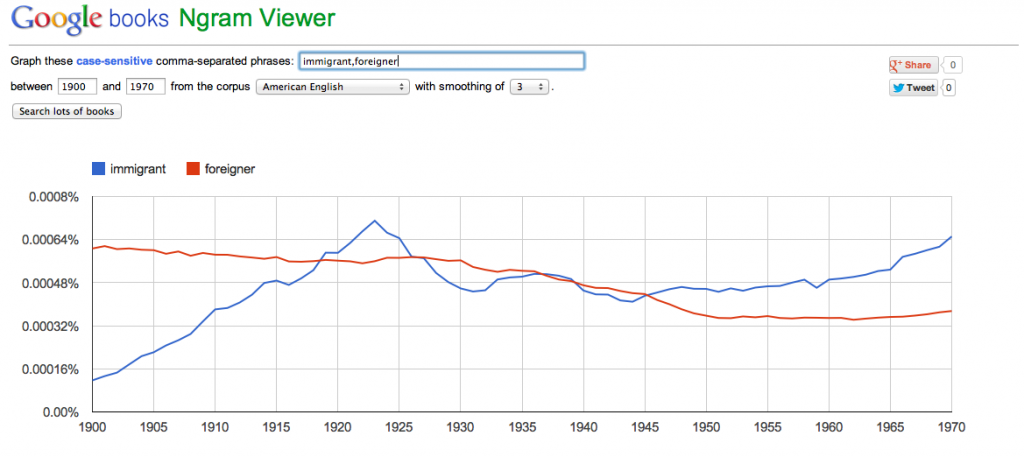Welcome to America: Final Project
I guess I should start with a short introduction about my family and myself. I am afraid I do not know a whole heck of a lot about my mom’s side of the family… my mom’s mom is Canuck whose family went to Canada sometime in the 1700s for fur trading and lumberjacking, while my mom’s dad is from the Rein area of Germany… and I have NO idea when his family came over to the United States. I DO however know when, how, and why my dad’s family came over. They do not really ever cease talking about it, and that is fine with me because I love knowing my family’s roots.
As you can see in the Chronik des Amtes Bipp (or the Chronicles of the Office of Bipp – Bipp/Niederbipp being where the Swiss Family Müller is from), our family is dated as moving to the Bipp area in 1568:
So along with the Freudigers, Roths, Felbers, and Schönmanns, my family settled in Switzerland, but in the 20th century they decided to break away from their branch of the family tree and sail to the United States.
Although my family missed the larger mass immigration movement to the United States in the late 19th – earlier 20th centuries, in 1963 they hopped on to the S.S. Statendam, a Dutch cruise liner, and made their way over to New York.
The Road Less Traveled
During the 1960s, most people and families who immigrated to the United States did so by ship, but not many did so by cruise liner. Many did so by steamers or freighters, but many had the same reasons in mind as my family: opportunity.
In 1963, my family sailed from Rotterdam, NL to New York, New York.
To my surprise, it only took them about a week to sail over. In my mind, I was thinking it would take about a month, but apparently the voyage went straight over even though it was a fancier cruise line.
According to the Federation for American Immigration Reform, between the years of 1961 and 1970, immigration looked a little like this:
By 1965, systems such as the National Origins Quota System had been done away with
… but in 1963 they still preferred naturalizing people who were already trained in certain skills or had family members who had already been naturalized.
1952
The multiple laws which governed immigration and naturalization to that time were brought into one comprehensive statute. It (1) reaffirmed the national origins quota system, (2) limited immigration from the Eastern Hemisphere while leaving the Western Hemisphere unrestricted, (3) established preferences for skilled workers and relatives of U.S. citizens and permanent resident aliens; and (4) tightened security and screening standards and procedures. (History of U.S. Immigration Laws)
So luckily for my grandparents, my grandpa Otto had already had many years of training and work in engineering…
…and my grandma Odette had been a secretary also for a number of years.
Unfortunately my dad was only 3, so he had no skills except sitting on the windowsill of the ship like my grandma had asked him not to.
When arriving in the United States
…there are a few important things to know:
My grandparents were given a book titled “A Welcome to U.S.A. Citizenship.” You can get it now as a .pdf file on the United States Citizenship and Immigration Service‘s website. It goes over what a good citizen is and what they do, it teaches you the pledge of allegiance and the lyrics to Samuel F. Smith’s 1832 America. It included the Constitution and pages where you could have people sign and take notes of your immigration process. Now it’s just a fancy .pdf on some website.
Since they came over in 1963, Elis Island was a thing of the past. They sailed straight into the New York Harbor, passed the Statue of Liberty, and marched straight to the immigrations office (though I know it was not as simple as that to get their citizenship).
As can be seen via this Ngram Viewer, people were not as concerned with immigrants or foreigners at this time as they were in the earlier 20th century, but concerns were on the rise again in the 60s and 70s:
There would still be things to come very soon after my family’s move that would bar some from doing what they had done a few years before. The Immigration and Nationality Act of 1965 officially got rid of the use of national quotas, though people did not seem overly worried about the amount of immigrants they were seeing coming over on the boats. Despite the abolition of the quotas, it remarked that it would put limitations on how many people from Western countries could immigrate.
1960s
The Immigration and Nationality Act Amendments of 1965 (the Hart-Cellar Act) abolished the system of national-origin quotas. There was, for the first time, a limitation on Western Hemisphere immigration (120,000 per year), with the Eastern Hemisphere limited to 170,000. Because of the family preferences put into immigration law, immigration is now mostly “chain immigration” where recent immigrants who are already here sponsor their relatives. Family related immigration is often outside the quota system. At the time, the then-chairman of the Senate Immigration Subcommittee Senator Edward Kennedy remarked that —“The bill will not flood our cities with immigrants. It will not upset the ethnic mix of our society. It will not relax the standards of admission. It will not cause American workers to lose their jobs.” (U.S. Senate, Subcommittee on Immigration and Naturalization of the Committee on the Judiciary, Washington, D.C., Feb. 10, 1965. pp. 1–3.) (History of Laws Concerning Immigration)
I guess it was lucky for my family that not only were they already a skilled set of people, but we were the first ones over from our family and so far the only ones still from our direct line in Switzerland.
Sources:
A Welcome To USA Citizenship. Department of Justice, Immigration and Naturalization Service. Revised: 1st February 1967.
Leuenburger, Johann. Chronik des Amtes Bipp. Copy from earlier copy of reprinted book: reprinted Nabu Press: 29th September, 2011.
http://en.wikipedia.org/wiki/History_of_immigration_to_the_United_States
http://www.midshipcentury.com/statendampursersdoors.shtml
http://en.wikipedia.org/wiki/History_of_immigration_to_the_United_States
http://www.history.com/topics/united-states-immigration-to-1965
http://www.fairus.org/facts/us_laws
http://www.uscis.gov/files/nativedocuments/M-618.pdf
http://urbanobservatory.wordpress.com/author/urbanchoreography/
http://en.wikipedia.org/wiki/Immigration_and_Nationality_Act_Amendments_of_1965
http://www.history.com/topics/united-states-immigration-to-1965
http://findlogo.net/show/detail/S/swiss-air-lines-164-logo#.UMp51KWmClY
Preserve the Content!
In order to preserve this particular content, I have copied and pasted it into a word document and saved it on both of my laptops, to my Google documents account, on my external hard drive, both of my flash drives. I have also printed a few copies of which I have saved and given to my parents and my grandparents because they wanted copies of it anyway! Hopefully no loss will occur, especially before it is graded. On my hard drives and flash drives I have copies saved both as visible and invisible files, though I am not sure that would protect it more. All of my passwords have been recently changed (and not to recycled passwords). I do not have any fireproof vaults or boxes in my home, so the only way I foresee losing the hardcopies is in a fire but … knock on wood (so punny!).
